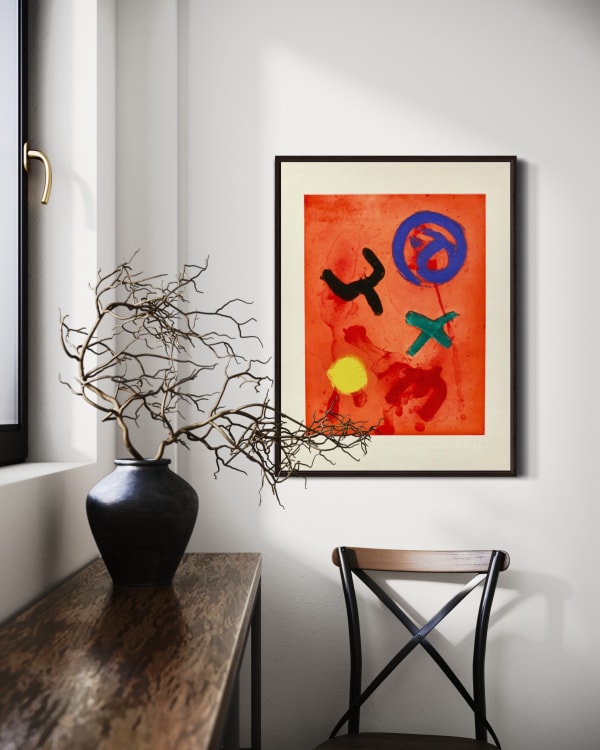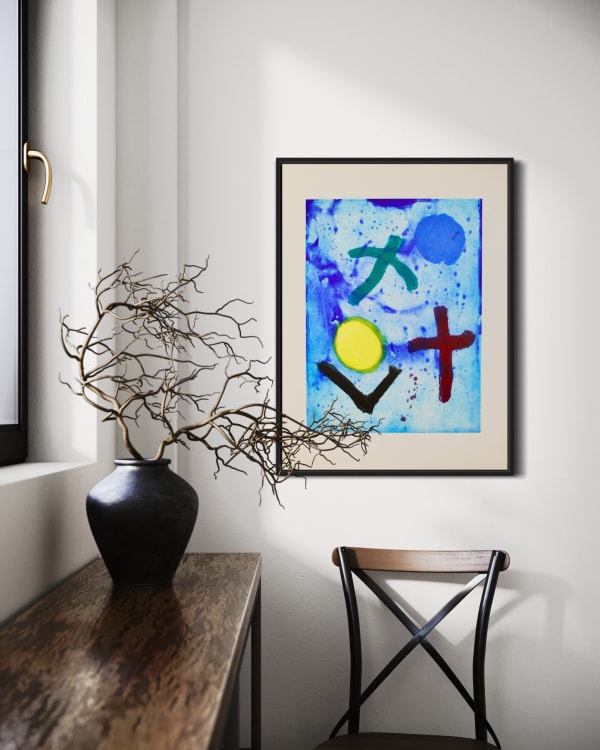John Hoyland
John Hoyland was born in Sheffield, UK, in 1934.
English painter and printmaker who trained at Sheffield College of Art, 1951-6, and the Royal Academy Schools, 1956-60. Hoyland began in 1954 to paint Sheffield landscapes and abstractions from still-life subjects. His devotion to colour began with experiments at a Scarborough summer school in 1957, where tuition was provided by Victor Pasmore, Tom Hudson and Harry Thubron.
At the Situation exhibitions of 1960-61 he showed some of his earliest fully abstract paintings, in which he used bands of colour to explore perceptual effects such as the relationship of image to background or to create the illusion of buckling the picture-plane. This geometric character soon gave way to sinuous lines enclosing discs of colour, and eventually to a freer and more fluid application of paint.
Hoyland visited New York in 1964 and American developments, especially from colour field painting and Post-painterly Abstraction, feature prominently in subsequent canvases, in the use of staining techniques and acrylic paint, the interaction of unmixed colours, and an emphasis on the material weight of paint. John Hoyland experimented with varied and tactile paint surfaces and a disposition of blocks of colours to create sensations of advancing and receding space. From the late 1960s Hoyland applied these methods to screenprints, lithographs and later to etchings and monotypes.




